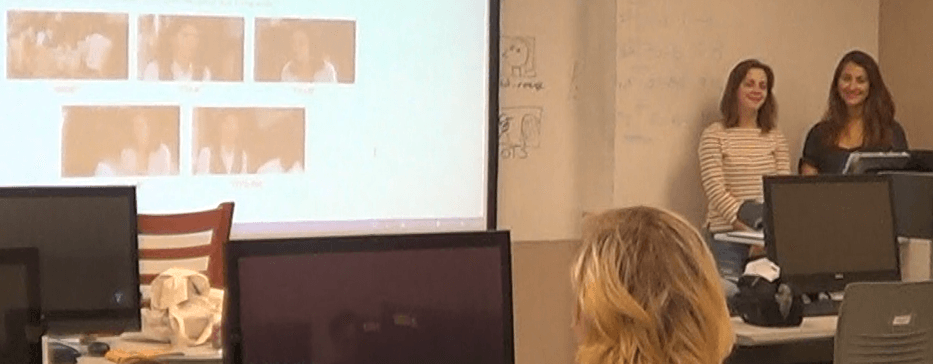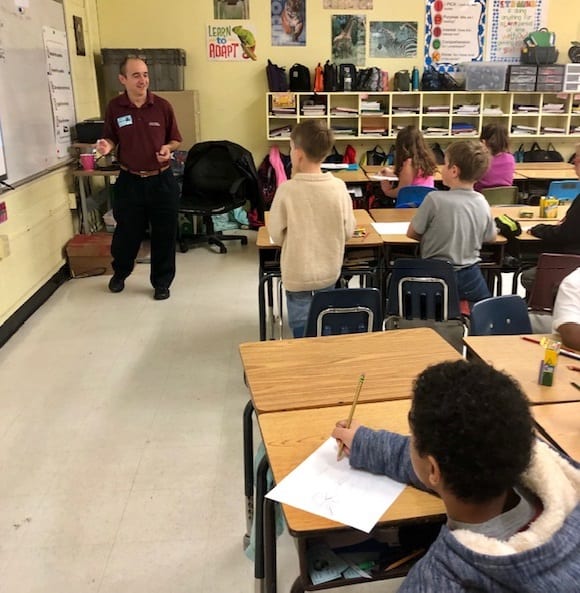Computing in the Movies
This workshop offers a unique way to learn about basic concepts of data science and machine learning through exciting hands-on filmmaking activities. The five-day workshop was offered as a pilot in June 2018 with the help of the Honors College’s Summer Institute Program. CofC undergraduates Sarah Sayce (standing left) and Alexandra Shope (standing right) are shown here demonstrating an example of how a Hidden-Markov Model represents probabilities for cutting between types of camera shots.
Alexandra wrote about how exploring data science concepts applied to film helped her to realize that her Data Science major could be combined with her personal interest in filmmaking. Alexandra’s article appears in the online magazine Pretty Smart.
In fall 2018, I hosted three one-hour sessions in partnership with the Charleston Young Artists Guild (CYAG). The CYAG is a club for 5th – 8th graders that makes once-per month visits with local artists. These three one-hour sessions were used to investigate how three of the most accessible activities from the aforementioned summer camp would be received by an audience of 5th-8th graders.
In fall 2018, I was invited to present a 45-minute lesson to a class of third graders at Spann Elementary School. Students learned how to annotate a movie data set by labeling each type of shot in a short movie clip and how computers can predict movie shots for a given situation. Students learned to identify different shot types by drawing storyboard representations of each shot type from examples (See below photo).
Image courtesy of P. Rosado (Spann Elementary) (image was cropped so only the backs of students are shown)
They demonstrated their knowledge by correctly identifying each shot type in a short video clip. This activity served to annotate the movie clip. Students learned how intelligent assistants in smart phones analyze patterns of previous text messages to predict lists of suggested replies. They applied this concept by counting which shot type in the annotated movie clip most frequently followed a given shot type. Even though they had not studied probability, they conceptualized how computers can analyze patterns of shot types to predict what type of shot might be used to film a given situation.
These preliminary results show the potential to engage diverse and youthful students with computing and data science through hands-on activities based on filmmaking. I am currently working with a colleague in our Department of Education to fine tune these activities to be used in more formal IRB-approved evaluations in classrooms. Local educators who are interested in having me visit their school are encouraged to contact me.


